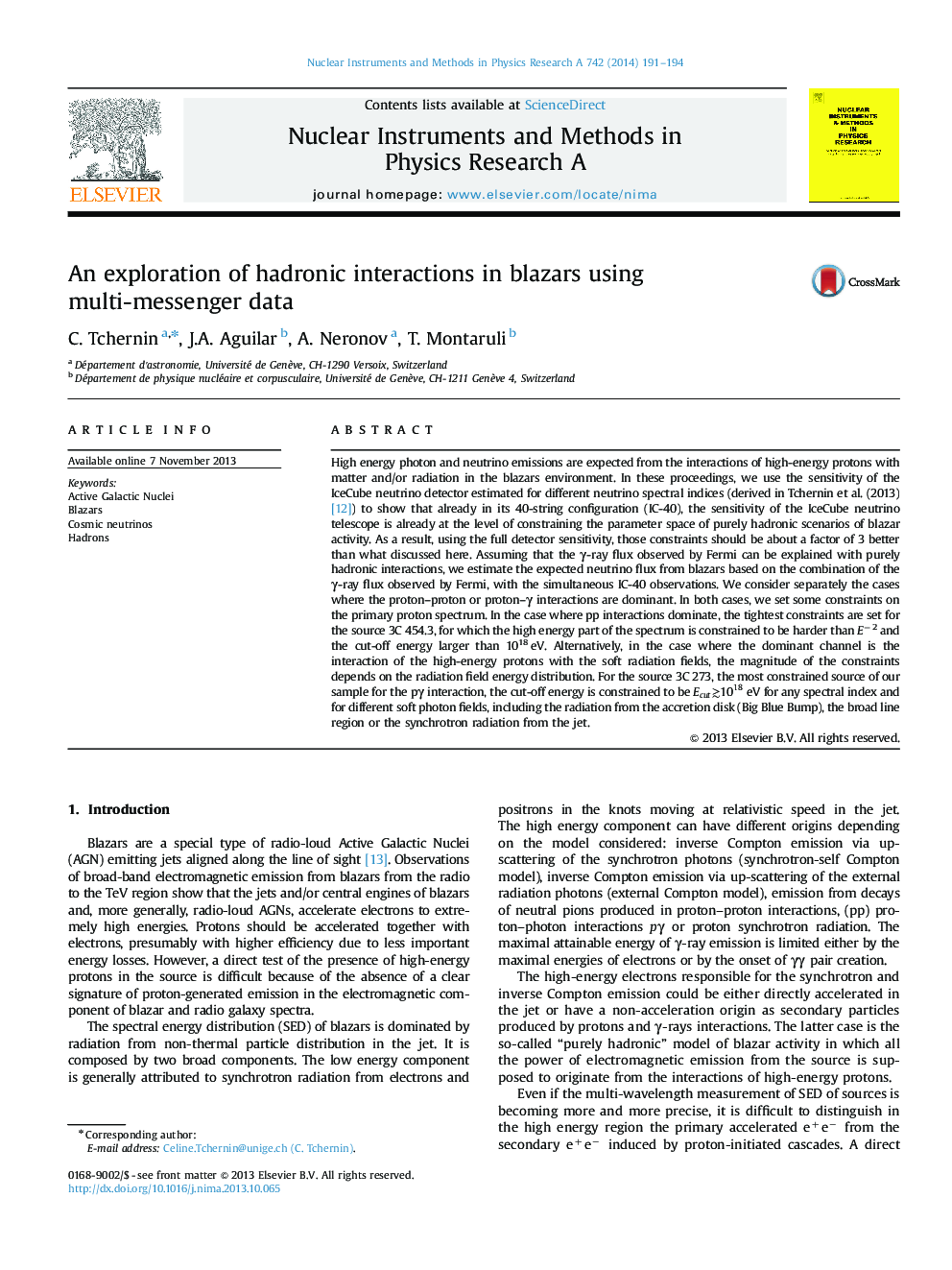| Article ID | Journal | Published Year | Pages | File Type |
|---|---|---|---|---|
| 8177040 | Nuclear Instruments and Methods in Physics Research Section A: Accelerators, Spectrometers, Detectors and Associated Equipment | 2014 | 4 Pages |
Abstract
High energy photon and neutrino emissions are expected from the interactions of high-energy protons with matter and/or radiation in the blazars environment. In these proceedings, we use the sensitivity of the IceCube neutrino detector estimated for different neutrino spectral indices (derived in Tchernin et al. (2013) [12]) to show that already in its 40-string configuration (IC-40), the sensitivity of the IceCube neutrino telescope is already at the level of constraining the parameter space of purely hadronic scenarios of blazar activity. As a result, using the full detector sensitivity, those constraints should be about a factor of 3 better than what discussed here. Assuming that the γ-ray flux observed by Fermi can be explained with purely hadronic interactions, we estimate the expected neutrino flux from blazars based on the combination of the γ-ray flux observed by Fermi, with the simultaneous IC-40 observations. We consider separately the cases where the proton-proton or proton-γ interactions are dominant. In both cases, we set some constraints on the primary proton spectrum. In the case where pp interactions dominate, the tightest constraints are set for the source 3C 454.3, for which the high energy part of the spectrum is constrained to be harder than Eâ2 and the cut-off energy larger than 1018 eV. Alternatively, in the case where the dominant channel is the interaction of the high-energy protons with the soft radiation fields, the magnitude of the constraints depends on the radiation field energy distribution. For the source 3C 273, the most constrained source of our sample for the pγ interaction, the cut-off energy is constrained to be Ecutâ³1018eV for any spectral index and for different soft photon fields, including the radiation from the accretion disk (Big Blue Bump), the broad line region or the synchrotron radiation from the jet.
Related Topics
Physical Sciences and Engineering
Physics and Astronomy
Instrumentation
Authors
C. Tchernin, J.A. Aguilar, A. Neronov, T. Montaruli,
